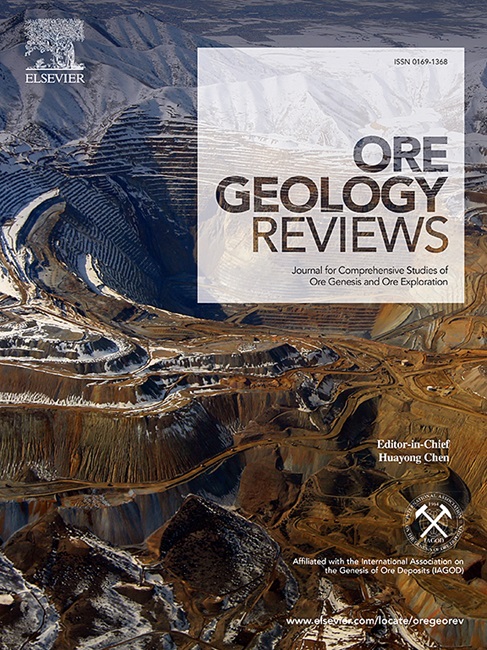Distribution, occurrence and enrichment mechanism of Co in Fe-Ti oxide deposits: An example from the giant Hongge deposit, SW China
IF 3.2
2区 地球科学
Q1 GEOLOGY
引用次数: 0
Abstract
Magmatic Fe-Ti oxide deposits are recognized as a potential significant source of Co. However, the distribution, occurrence state and enrichment mechanism of Co within these deposits are not well understood. The Hongge deposit, one of the world’s largest Fe-Ti oxide deposits, has an estimated Co reserve of 488,400 tons and an annual production of Co concentrates of 20,000 tons. Based on comprehensive analyses across various scales from lithologies to rocks and minerals, this study aims to elucidate the occurrence state and enrichment mechanism of Co in Fe-Ti oxide deposits. Among different rock types, the highest concentrations of Co are observed in massive ores, with an average of 280 ppm, followed by disseminated ores, olivine pyroxenite, pyroxenite, and gabbro. In silicate and oxide minerals, the abundance of Co decreases in the following order: olivine > magnetite > ilmenite > amphibole > pyroxene > apatite and plagioclase. Among sulfide minerals, the Co content is ranked as follows: cobaltite (with Co contents ranging from 18.42 % to 25.80 %) > pentlandite > pyrite > pyrrhotite > chalcopyrite. Cobalt occurs as three primary forms: (1) an independent mineral, such as cobaltite (As0.99∼1.10Co0.55∼0.74Ni0.20∼0.37S); (2) isomorphous substitution for Fe, Mg and V; (3) microscopic inclusions in magnetite and pyrrhotite. The processes contributing to the enrichment of Co include fractional crystallization, sulfide-silicate immiscibility, and hydrothermal alteration. Sulfide-silicate immiscibility plays a predominant role in the Co enrichment.

求助全文
约1分钟内获得全文
求助全文
来源期刊

Ore Geology Reviews
地学-地质学
CiteScore
6.50
自引率
27.30%
发文量
546
审稿时长
22.9 weeks
期刊介绍:
Ore Geology Reviews aims to familiarize all earth scientists with recent advances in a number of interconnected disciplines related to the study of, and search for, ore deposits. The reviews range from brief to longer contributions, but the journal preferentially publishes manuscripts that fill the niche between the commonly shorter journal articles and the comprehensive book coverages, and thus has a special appeal to many authors and readers.
 求助内容:
求助内容: 应助结果提醒方式:
应助结果提醒方式:


